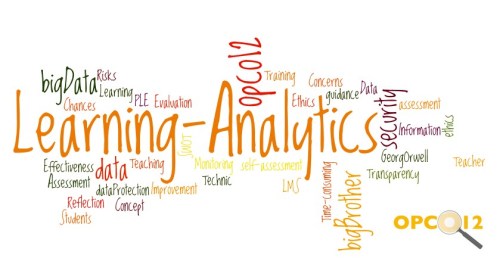A big part of what makes the Socrato software and service so useful for helping students get the most out of their test prep time is its unique learning analytics capabilities. These features enable students and tutors to clearly identify individual strengths and weaknesses in specific test areas with minimal time and effort. In short, Socrato helps educators create effective personalized learning plans by informing them in an easy-to-understand way about where there are problems.
In the online education industry as a whole, learning analytics have evolved similarly. Their focus, increasingly, is on measuring student participation levels and other variables that can indicate how engaged students are, individually and collectively. Among the questions these learning analytics can potentially answer is: How can the online course instructor improve his or her instructional approach and better support students?
In a bricks-and-mortar classroom, instructors can get a sense of student engagement through factors like attendance, in-class participation, and direct conversations during office hours or before/after class. Analytics that reveal similar aspects of engagement in online learning contexts are becoming available through the exploding use — especially at the college level — of Learning Management Systems (LMS) like Blackboard and Moodle.
LMS platforms aggregate huge volumes of data, which can be analyzed at multiple levels by institutions, departments and instructors to support improved learning outcomes. In many LMSs, each mouse click and page view on course content is recorded, along with viewing time. Several the relationship between students” LMS usage and their success in online courses.
The easier it is for instructors to interpret this data meaningfully, the more effective online education can potentially be. LMS reporting capabilities that instructors can use to create more learner engagement include:
- How often is each student logging into the course?
- How much time are students individually and collectively spending with each resource?
- Did a student review the assignment? Did they submit it, and when?
- At what points in the course curriculum are instruction boards getting more or fewer views and posts?
- How are students performing overall on online tests? Which questions caused problems and which were answered correctly by a high percentage of students?
The challenge for instructors is to understand how these metrics relate to student engagement and the quality of learning outcomes. The has recently addressed this issue directly as part of a series of posts on learning analytics — which are among the very best articles I”ve seen on the topic overall. Some of the from blogger “s personal research and experience include:
- Students find interactive resources more engaging, and tend to produce higher quality assignments after reflection and analysis of interactive materials.
- Numbers of views (not just the number of posts) on discussion boards can indicate the class”s level of interest in a topic.
- It”s worthwhile to identify which course activities not only engage students, but also support them to use higher-order cognitive skills to produce quality analyses.
- LMS reports are best viewed in combination with student work output as a means of evaluating performance.
Online courses and learning formats (e.g., MOOCs) are becoming increasingly popular and important in education. And LMSs are being ubiquitously employed to support them. These two trends are converging to make learning analytics one of the most important applied and research topics in education today.
In future posts I plan to dig deeper into emerging issues with learning analytics, including how educators can apply them, how learners can benefit from them, and some of the ethical concerns around all that “big data” and how it”s used.
Have you benefitted from analytics from an LMS in your work as a teacher or tutor? How easy has it been for you to improve your course offerings and student performance on that basis?
Featured image courtesy of Sylvia Mössinger.
SAT vs ACT: Choosing the Right Test [NEW EBOOK]
Download this free 20-Page Ebook for Tutors Now!
Our free 20-page ebook is a step-by-step guide on how to select the right test for your student. Learn everything you need to know about using the PLAN and PSAT to improve student scores, how to leverage learning analytics to select one test over the other, and other tips on how to take the guesswork out of selecting the ACT vs the SAT.












Test message